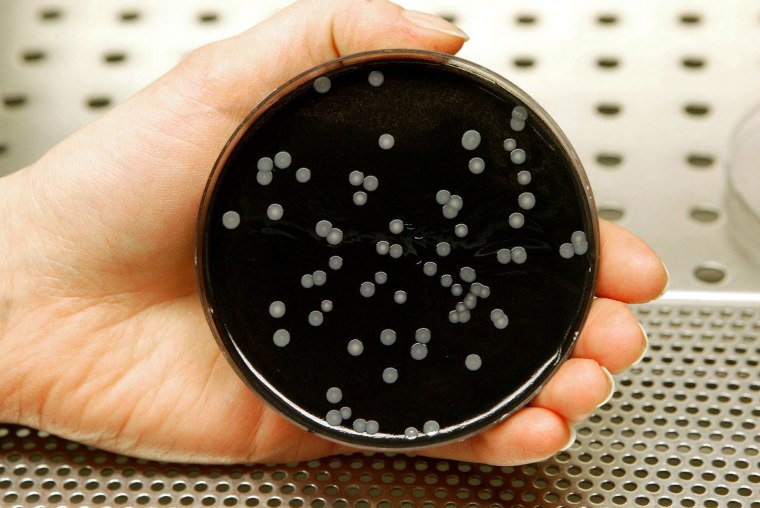The number of people sickened in at outbreak of Legionnaires' disease in New York City has risen to 81, and seven of them have died, health officials said Monday.
"All deceased individuals were older adults and had additional underlying medical problems," the city's health department said in a statement.
The infection has come from air conditioning cooling towers on the top of five buildings, the city’s Department of Health and Mental Hygiene says.
“We've been working actively to decontaminate the five towers that have been identified to have this bacteria in them,” Dr. Jay Varma, deputy commissioner for disease control, told NBC News. “We tested 17 cooling towers in the area total.”

He says more cases could turn up.
“We hope that there are no more cases, and certainly hope no more deaths, but do expect additional cases simply because there could be people who may have been infected before the cooling towers were cleaned,” Varma said.
“The bacteria has an incubation period. It can be as long as 10 days between infection and disease.”
Legionnaires' disease is caused by Legionella bacteria. They thrive in warm water and mostly infect people when they breathe in contaminated particles of water. Usually, it causes very mild symptoms or no symptoms at all, but people with weakened immune systems, such as people getting cancer treatment or the elderly, can develop severe infections.
The disease causes chills, fever and a cough, and can cause stomach upset and neurological effects.
Legionnaires' got its name from an outbreak in Philadelphia in 1976, when it made 221 people sick and killed 34. Most victims were attending an American Legion convention at a single hotel.
The number of cases in New York City have more than tripled in the last decade, from 73 in 2004 to 225 in 2014.
“This is the largest outbreak that we have seen in several years,” Varma said.
The infection can be treated with antibiotics and it doesn’t spread from person to person. The solution is to identify and clean the source.
“It’s very similar to cleaning any surface. You apply chemicals like chlorine and other agents to kill the bacteria, then physically scrubbing to remove it,” Varma said.
“It takes at least 24 hours to clean, but can take longer because these are large structures and the process requires special teams handling toxic chemicals working in a difficult physical structure.”
The department will be investigating the outbreak.
“We don’t know how the towers get contaminated in the first place,” Varma said. “We know bacteria can live in the environment, but don’t know why some are more likely to be contaminated than others. One explanation is that the chemical treatment systems to maintain them do not function well.”
Temperature changes may also be a factor, Varma said.
